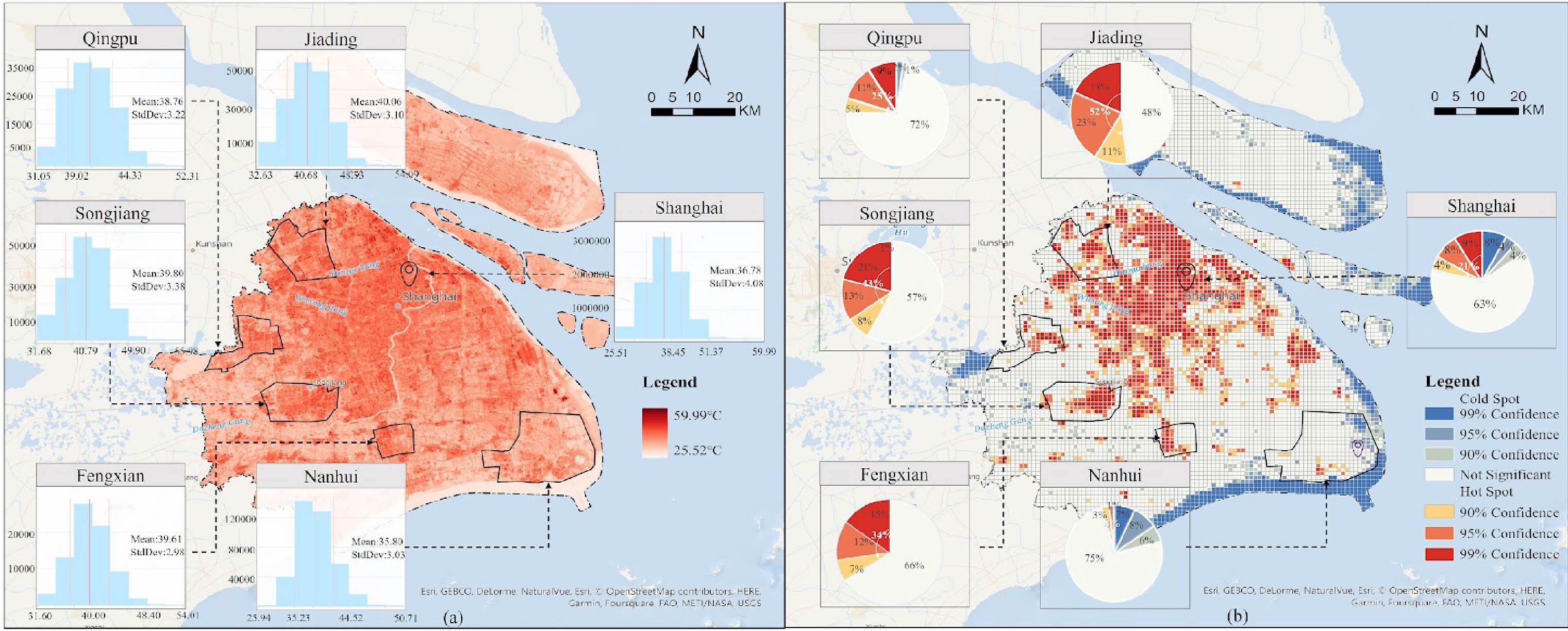Anyone who’s survived a Shanghai summer can agree on one truth: it’s extremely hot. But you might be surprised to learn that there’s a reason for the city’s heat. Due to a phenomenon known as the urban heat island effect, cities tend to be much hotter than rural areas.
The phenomena is generally caused by man-made infrastructure such as concrete pavement and buildings, which tend to retain more heat than natural structures. But careful urban planning can mitigate the rise in temperature caused by urban heat island effect. An NYU Shanghai research team’s paper, titled Are New Towns Prone to Urban Island Heat Effect? Implications for Planning, Form, and Function, and recently published in the journal Sustainable Cities and Society, explores this issue in the context of Shanghai.
“It’s a very critical time,” says Assistant Professor of Urban Science and Policy Guan Chenghe, who argues that currently, planning strategies for new towns don’t pay enough attention to climate change. Guan, who supervised the research in the study, says, “When China starts building new towns, not only in Shanghai, but all over the nation, we should think about how climate change affects people living in new housing.”
The study borrows tools from the fields of both urban planning and ecology. This uncommon collaboration allowed the team to draw conclusions about climate change effects on new town residents, as well as identify viable urban planning solutions.
The study looked at five Shanghai new towns: Jiading, Qingpu, Songjiang, Fengxian, and Nanhui. The team used a combination of several tried-and-true urban planning and ecology assessment tools. First, they used an algorithm to identify any hotspots, or ‘urban heat islands.’ Once the specific urban heat island form was identified, the team used Geodetector analysis, a statistical method that detects spatial stratifications, to determine the impact of different types of land use on the urban island heat effect.
The study found that Shanghai new towns are more susceptible to the urban island heat effect than the city at large. While Shanghai had an average land surface temperature of 36.78 degrees Celsius (98.2 degrees Fahrenheit), Shanghai new towns such as Jiading and Qingpu’s average land surface temperatures instead hovered around 39 or even 40 degrees Celsius (102.2 or 104 degrees Fahrenheit).
The study found that the land surface temperatures in the Shanghai new towns were caused by the use of the land. Residential areas, public services, and catering services created excessive heating, while areas such as parks had a cooling effect.

A map of Shanghai with bell curves depicting the mean temperature of Shanghai and the Shanghai new towns (left) and figures depicting the relative percentages of cold versus hot spots (right). From Are New Towns Prone to Urban Island Heat Effect?, published in September 2023.
To combat urban island heat effect, the study recommends that city planners should take climate change into account when planning future urban development. In particular, the study found that strategic placements of green spaces (like parks) and blue spaces (like lakes or rivers) was a good solution to minimizing urban island heat effect.
One surprising find of the study was that temporal variations can affect this phenomenon. “The urban heat island effect is actually better mitigated at night, even without considerations of climate change,” says Guan. As a result, certain groups are more susceptible to the heat. “During the daytime, the people who do not travel to the city center, the elderly and young, actually suffer more.”
The research team hopes that urban planners will take their findings into account when developing future cities. “We provide this [study] so that policy makers can use this [research] as an empirical and quantitative research background,” says Guan. “They can use this to say, actually, we have proof that if we don't consider climate change when we plan the physical space of new towns, we are going to make things worse for urban heat.”
First author of the paper, You Meizi, an Urban Ecology PhD candidate from the NYU Shanghai - ECNU Joint Graduate Training Program (N.E.T.), led the research project under Guan’s guidance. The study is one of a series of studies on the urban island heat effect conducted by the Shanghai Key Laboratory of Urban Design (LOUD) and its team of interdisciplinary researchers focused on creating strategies for sustainable and climate-adaptive urban development.


